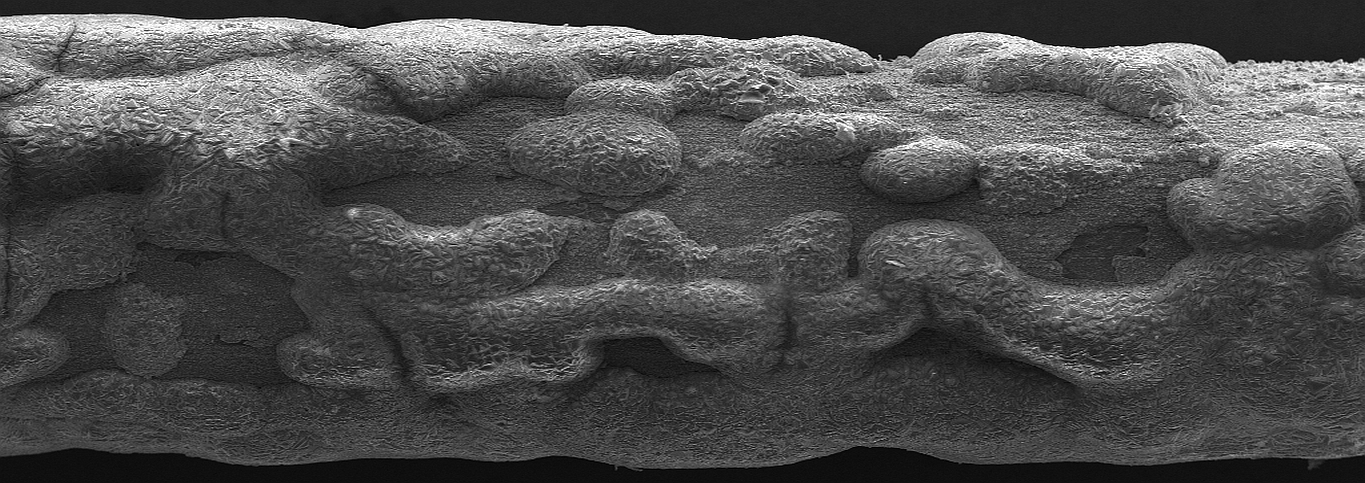A world first for Thermocouples
Case study
MSL scientists develop unique calibration service.

Thermocouples have long been considered the workhorse of temperature measurement. Simple and robust, they can operate across a wide range of temperatures, making them suitable for any number of applications. “But their simple design belies the complex processes they undergo when in use,” says MSL Senior Research Scientist, Dr Emile Webster. Alongside Distinguished Scientist Dr Rod White, Webster has been leading MSL’s thermocouple thermometry work for a decade. And now, they’re rewriting the book on thermocouple calibration.
Complexity
Made from two dissimilar metal wires joined together to form a junction, thermocouples operate using the Seebeck effect, whereby a small voltage is generated in response to a temperature difference. Through knowledge of the properties of each metal, and the application of specific formulae, this voltage can be interpreted as a measurement of temperature. “Thermocouples are quite different to other sensors because they generate a signal wherever there is a temperature gradient,” says Webster. “This means that any part of a thermocouple can be used as the sensor.”
But in most cases, the very act of using a thermocouple alters its properties, as Webster explains. “Nearly all thermocouple materials undergo metallurgical changes, like reordering of the crystal structure, chemical diffusion and oxidation, at temperatures beyond 200 °C. This can lead to significant instabilities and errors in measurement.” So, in order to reliably assess a thermocouple, its performance and uniformity needs to be defined over its entire length.
Performance
This is where MSL’s world-leading measurement facility comes in. Our linear-gradient furnace operates between 100 °C and 1100 °C and is able to simultaneously expose a thermocouple to a continuum of temperatures, up to a maximum determined by the immersion depth, ageing the sensors in a very precise manner. “It effectively imprints a time-dependent thermal signature on the thermocouple”, says Webster.
Interpreting this signature, and using it to quantify the changes induced by the furnace, requires another piece of bespoke equipment; a thermocouple scanner. It consists of two adjoining heat-pipes – one operated at room-temperature using acetone and the other at 100 °C using steam – through which a thermocouple is passed at a known speed. The scanner can pick out minute changes in the thermocouple signal due to metallurgical differences along the length of the thermocouple wire, and because its operating temperature is low, it doesn’t induce any further changes to the metals. “By scanning the thermocouple, you can interrogate the performance of the entire sensor,” says Webster. “You can then correlate its output signal at a known position to the temperature it was exposed to in the furnace.”
The combined system of a linear-gradient furnace and a dual heat-pipe scanner is unique in the world, and it has enabled rapid investigation of thermally-induced changes in different types of thermocouple. “It has meant that, in the space of months, we can now do experiments that would normally take decades – or in some cases, experiments that were considered completely impossible” explains Webster.
Design
MSL’s work has attracted a lot of attention, including from UK-based thermal technology developers, Isotech. David Southworth, Isotech’s Vice President of Global Sales and Marketing says, “The innovation of MSL is respected worldwide – we first started discussing their thermocouple homogeneity scanner at an international conference a few years ago.” Since then, Dr Emile Webster has collaborated closely with Isotech, and signed an agreement to license MSL’s software and hardware designs to the company. In January 2020, Isotech launched a commercial version of the thermocouple scanner, and they’re confident that its customers will be interested in it. Southworth continued, “Emile is recognised as a leader in the field. It has been a delight to work with him – he has an enthusiasm and passion that motives those alongside him. We have also valued the quick response to our queries.”
Measurement
Both White and Webster are also playing a leading role in the development of the new BIPM guide to thermocouple thermometry and Webster is currently developing a new intrinsically stable high-accuracy Platinum-Rhodium (Pt/Rh) reference thermocouple. They continue to provide advice to industry on the use of thermocouples at all temperature scales.
With more than 20 peer-reviewed papers on thermometry, and much of the critical development work completed, MSL is now in a position to offer a state-of-the-art thermocouple calibration system. “We have unique data on the performance of a huge range of thermocouple types,” says Webster. “We’ve filled in knowledge gaps, solved challenges, and opened up new areas of thermocouple research. It’s exciting to be able to use our systems to put together a calibration service unlike anything else in the world.”
For more information on our thermocouple calibration service, contact Dr Emile Webster.
